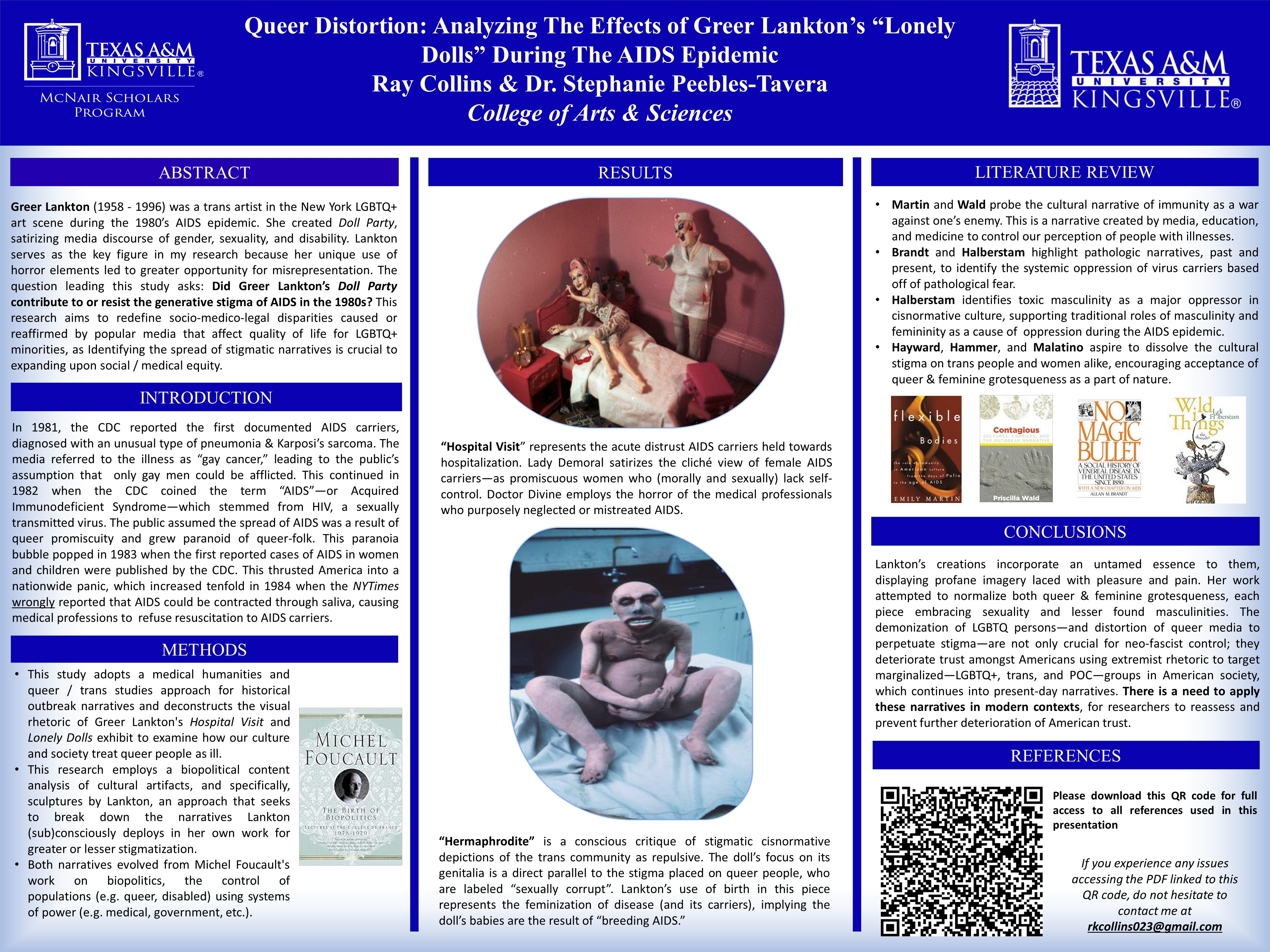In this research project, I analyze artist Greer Lankton’s exhibit Doll Party, an installation of various dolls created throughout the AIDS epidemic that offer satirized grotesque visages of trans and queer women as inherently effeminate or feminized by their proximity to AIDS. Using a queer studies and medical humanities approach that deploys Jack Halberstam’s concept of female masculinity and Priscilla Wald’s examination of outbreak narratives, I highlight how Lankton’s work problematizes cultural narratives of binary gender that feminize AIDS and its predominately gay male victims, leading to the medical industry’s stigmatization and neglect of queer-folk and AIDS carriers during 1980s America. This hostile relationship between (presumably cis) practitioners and queer patients continues into the twenty-first century. I firmly argue that Lankton’s over-usage of horror elements and grotesqueness in her work satirizes this hostile relationship and the media narratives that pathologize queer victims of AIDS to create a cognitive dissonance—which I call queer dissonance—between her audience and the media narratives themselves, with the goal of correcting this hostile relationship. I suggest that in over-satirizing the misrepresentation of queer-folk during the AIDS epidemic, Lankton’s work fails to appeal to twenty-first century audiences and ironically contributes to the stigmatic narratives of queer-folk that she aimed to prevent.
Faculty Mentor: Dr. Stephanie Peebles-Tavera
Department of Language and Literature


